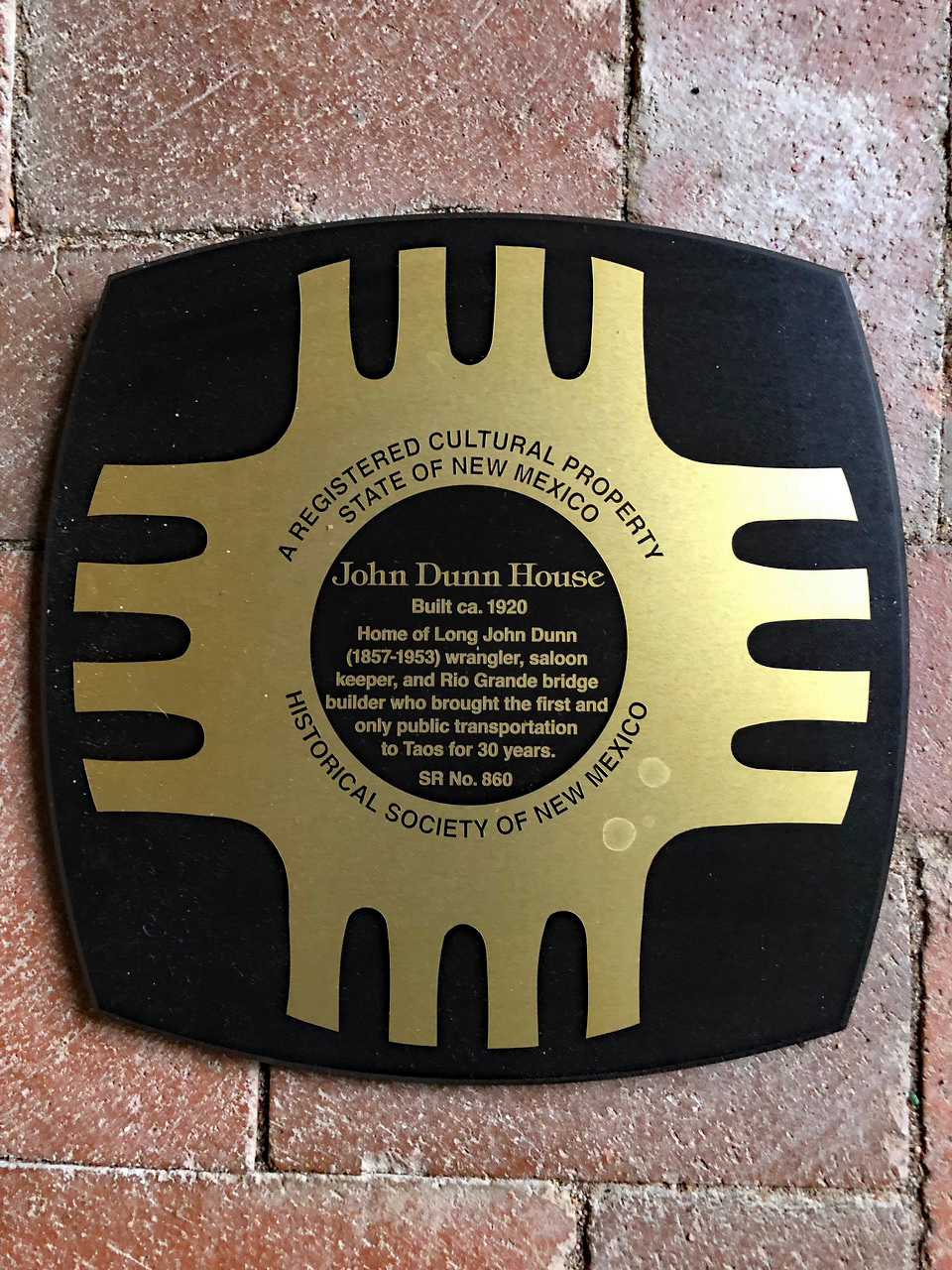The man and his legacy
By Cindy Brown
The life of Long John Dunn is a study in contrasts and a portrait of resilience.
Dunn was imprisoned in Texas, yet escaped and became known as the King of Taos. He admitted to his own sleight of hand in gambling, but also was a respected member of the Taos community. He arrived in Taos with nothing, but through sheer determination and a bit of luck, went on to own four saloons, a gambling hall, a hotel, two bridges, a livery stable and to control most of the transportation in and out of Taos for close to 30 years. In Max Evan’s 1959 biography of Dunn, “Long John Dunn of Taos: from Texas Outlaw to New Mexico hero,” Evans says, “He lived in his ninety or more years one of the most incredible lives of any of the old-time westerners.”
Dunn almost starved and escaped being killed many times, yet he survived to be 94 years old. What accounts for the near-miraculous life and luck of John Dunn or as he was known in Taos — Juan Largo?
Life and times
According to Polly Raye, who has owned the former John Dunn house that now houses shops for 40 years and has collected much history about Dunn, “What defined him as a person was that he was a scrambler. He started out very poor in Texas. He got thrown in jail for accidently killing his sister’s abusive husband (who threw the first punch). He was being noble defending his sister. Many times, he was close to starvation, but he was resilient and started over after accidents, robberies and narrow escapes from the law.”
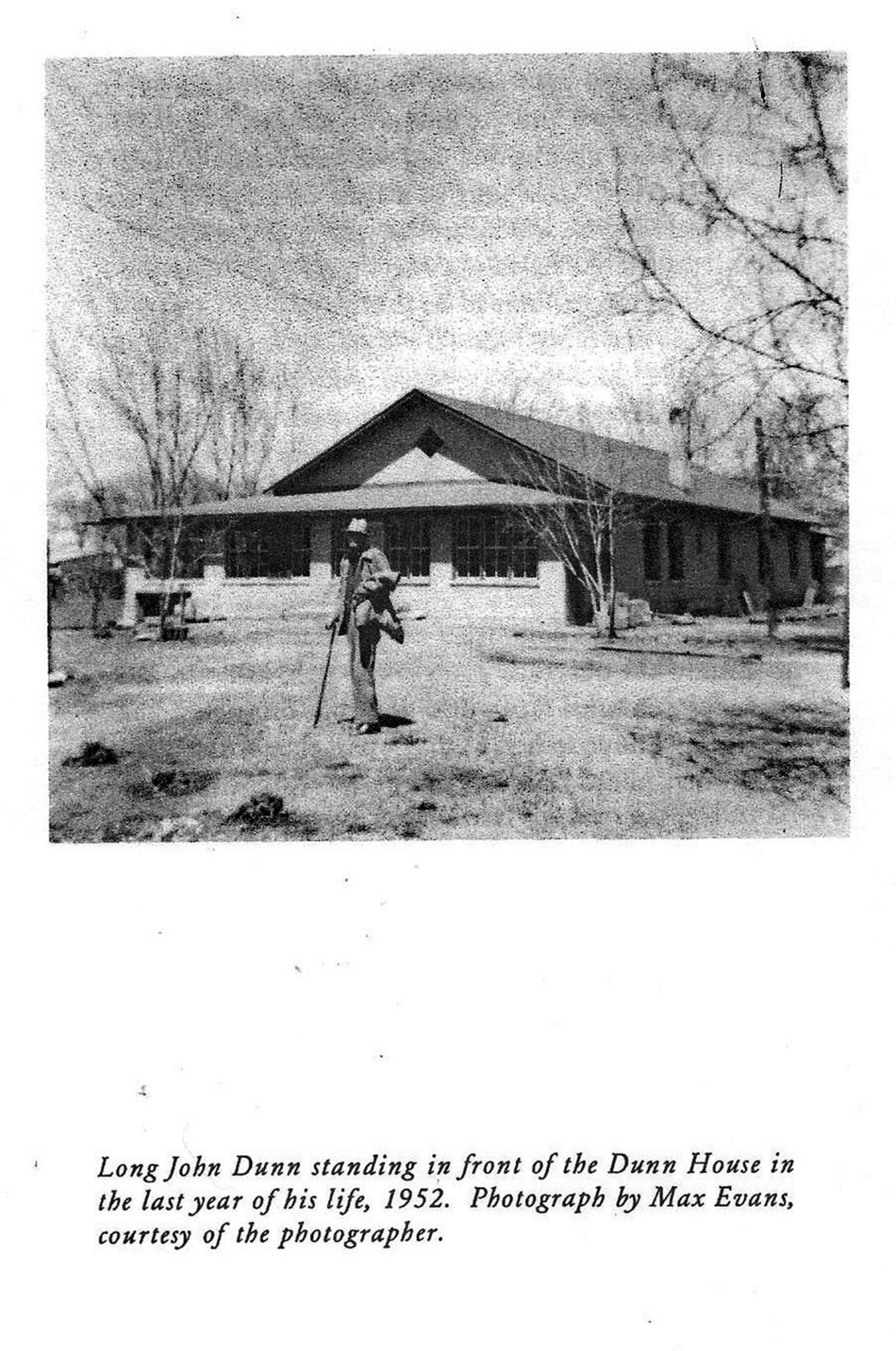
Evans, who was a friend of Dunn’s, wrote in his biography that Dunn was born in 1857 in Victoria, Texas. Dunn is quoted as saying “We were trying to make a living on a little rolling dry-land, slow-starvation farm.” Dunn’s father was wounded in the Civil War, and died suddenly of this wounds. The family was too poor to pay for a funeral and Dunn dug the grave himself, thinking, “ I tried to numb my mind to what I was doing but as I dug deeper into the ground a feeling of grim determination settled over me. I was dead set in some way I would elevate myself out of the poverty that forced me to dig my own father’s grave…” Trying to help the family make ends meet, he went to work for his uncle for 12-and-a-half dollars a month. Then he worked for a neighbor who promised to treat him right, but found himself working the fields, milking cows, chopping firewood and sleeping in a barn. After keeping him working day and night, the man paid him four dollars for the month. After a good deal of brooding, Dunn stole the man’s stallion and headed west.
His travels led him to a ranch near the Rio Grande in Texas. He earned $25 a month, which he sent home to his mother. He then joined a trail drive north to the N-Bar-N ranch in Montana with two thousand steers. As biographer Evans said, “The trail drive tested every good and bad quality in a man. During the trails of hundreds of miles across open spaces, the best or the worst was certain to come out.” He added that Dunn became an expert with both rope and gun. “By many hardships and narrow escapes, he developed a profound lack of fear. All of these were to combine in later years to great advantage,” wrote Evans.
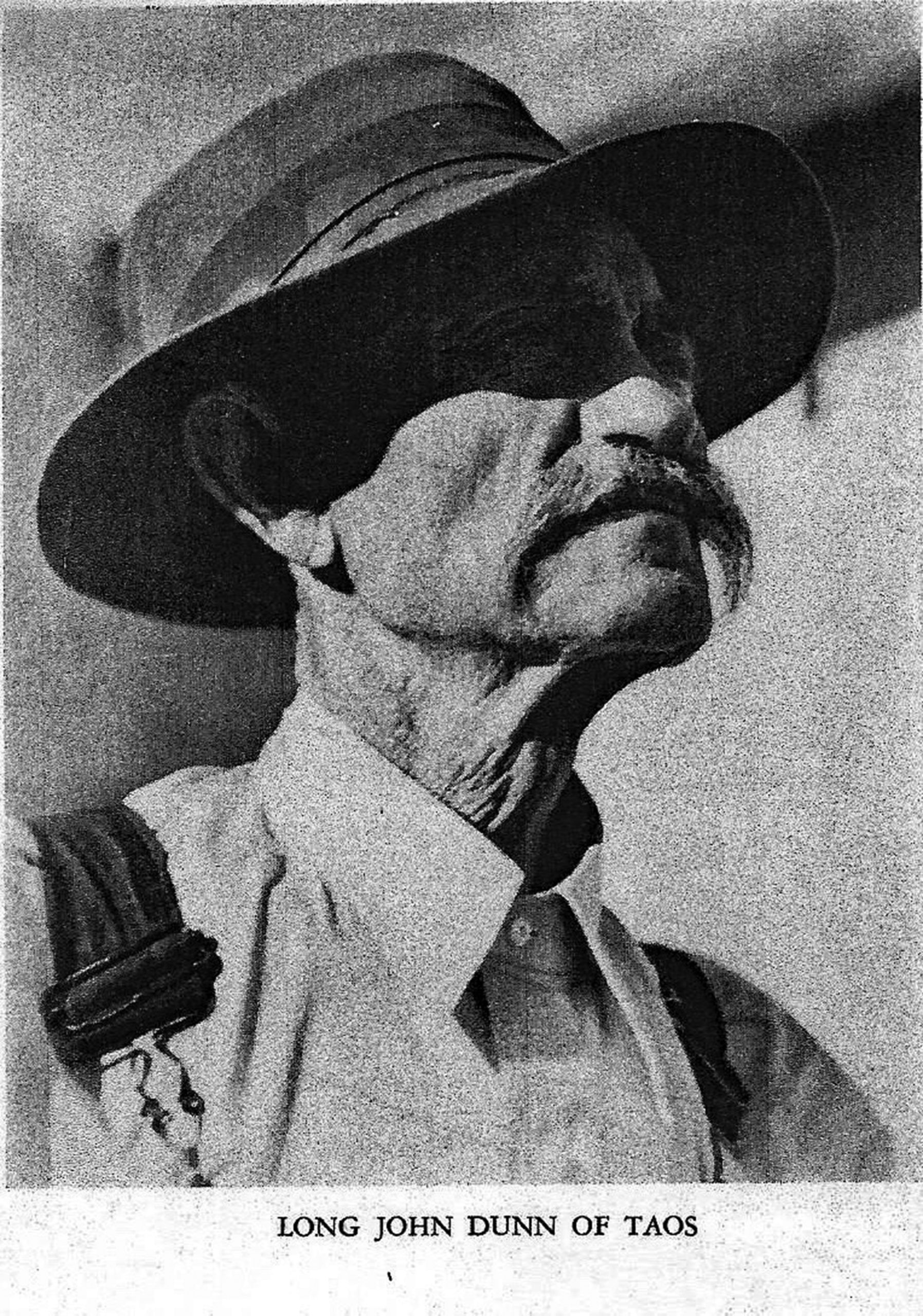
This trail drive stopped in Dodge City, Kan. where he saw his first train, which he tried to lasso. “His decision had been made after several hours in a Dodge City saloon. He roped it all right, right around the smokestack. It jerked him and his horse down, nearly killing them both,” said Evans. Having to quarantine the steers for a month, Dunn had time to watch the gamblers and learn to gamble himself.
Dunn worked his way back to Texas, where he discovered that his sister had married a drunkard that was abusing her. When Dunn met the man in the street and tried to question him, the man hit Dunn in the mouth. Dunn got a good punch in to the jaw and the other man went down, hitting his head on a hitching rail. He died, and Dunn was sentenced to life imprisonment at the state penitentiary. When he was transferred to a prison farm, Dunn got hold of a smuggled file, cut himself free of his leg irons and made his escape by jumping into the surging river nearby.
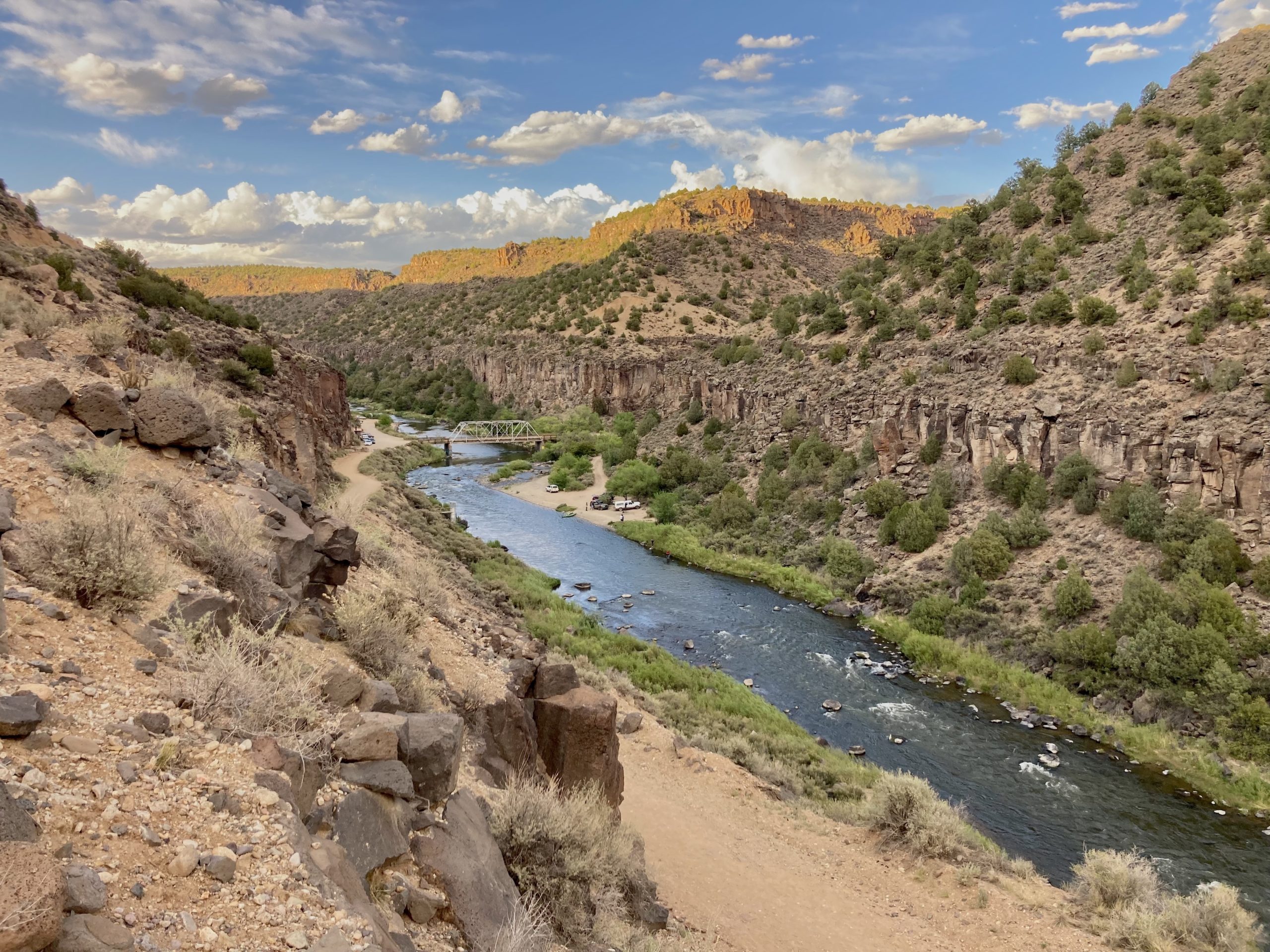
He made his way across the Rio Grande to Matamoros, Mexico, where he made his living smuggling and gambling. Finding himself back in Texas, Dunn competed in a rodeo. He took second money in bull riding and first in calf-roping, but it turned out, one of the horses he had sold to pay his entrance fee was stolen. While a judge was preparing to sentence him, he took two strides and leaped through a window. Stealing a horse, he was again free and on the run from the law.
Dunn rode into a wagon campground and met a man who turned out to be Tom Holder, who agreed to smuggle him into New Mexico under the hay in his wagon. Although a group of Texas Rangers hunting for Dunn stopped Holder, they didn’t find Dunn and that’s how he came to arrive in Elizabethtown, N.M.
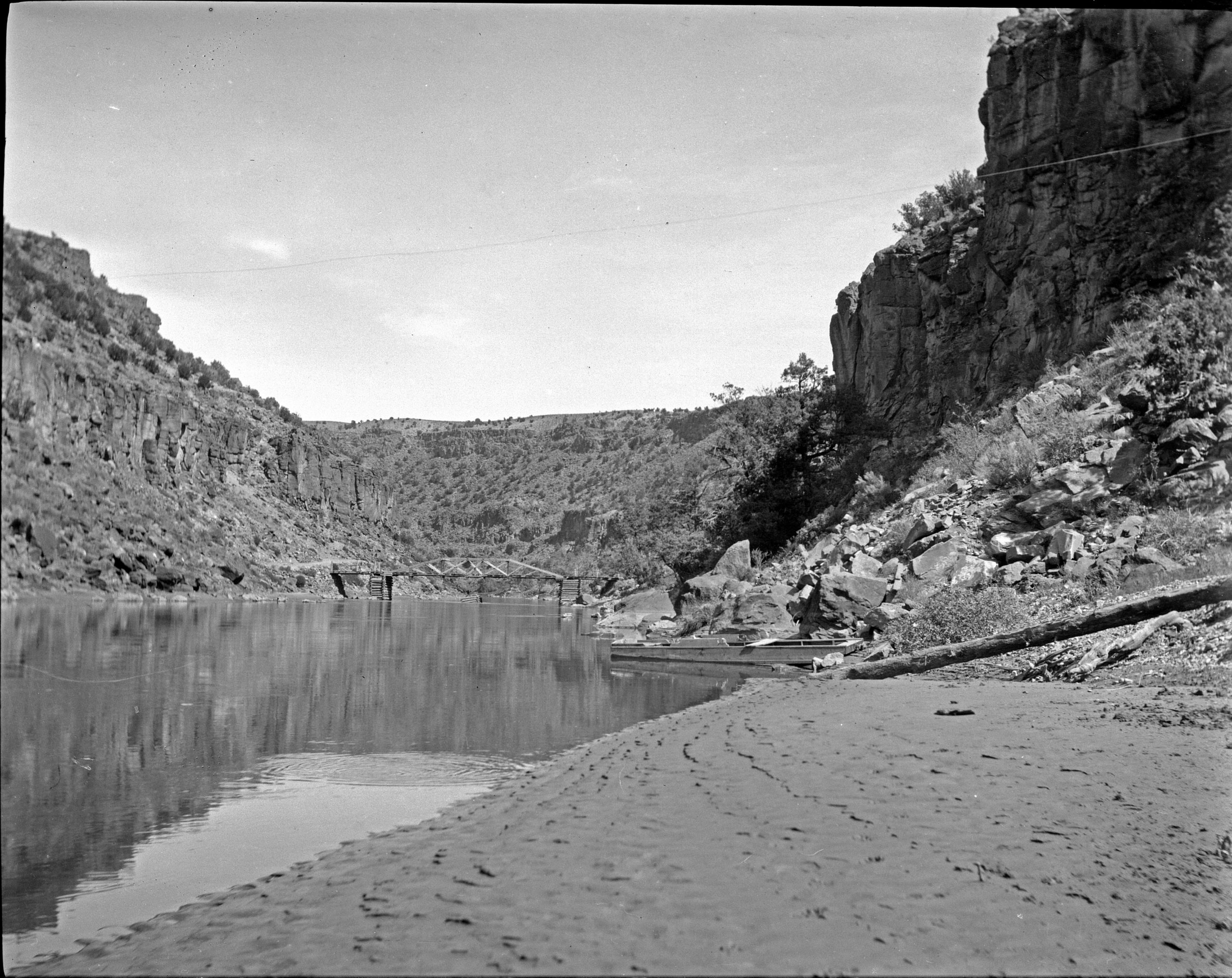
Dunn ran poker games during the gold-boom that first started in Elizabethtown in 1866. For a time, he owned the whole town of Red River. In 1889, he rode through a town called Therma, now know as Eagle Nest and into the Taos Valley. “John checked up and found that the ancient community was without any means of public transportation, except a branch-line railroad which ended about thirty miles west of town. Somehow, he knew that this was it,” wrote Evans.
He was tall in the saddle — at over six feet — and rode into town ‘sitting straight as a lightning rod’ to start the long process that would lead him to buy two bridges over the Rio Grande at Taos Junction and Arroyo Hondo, establish stagecoach and mail service and a hotel in Arroyo Hondo, among other ventures
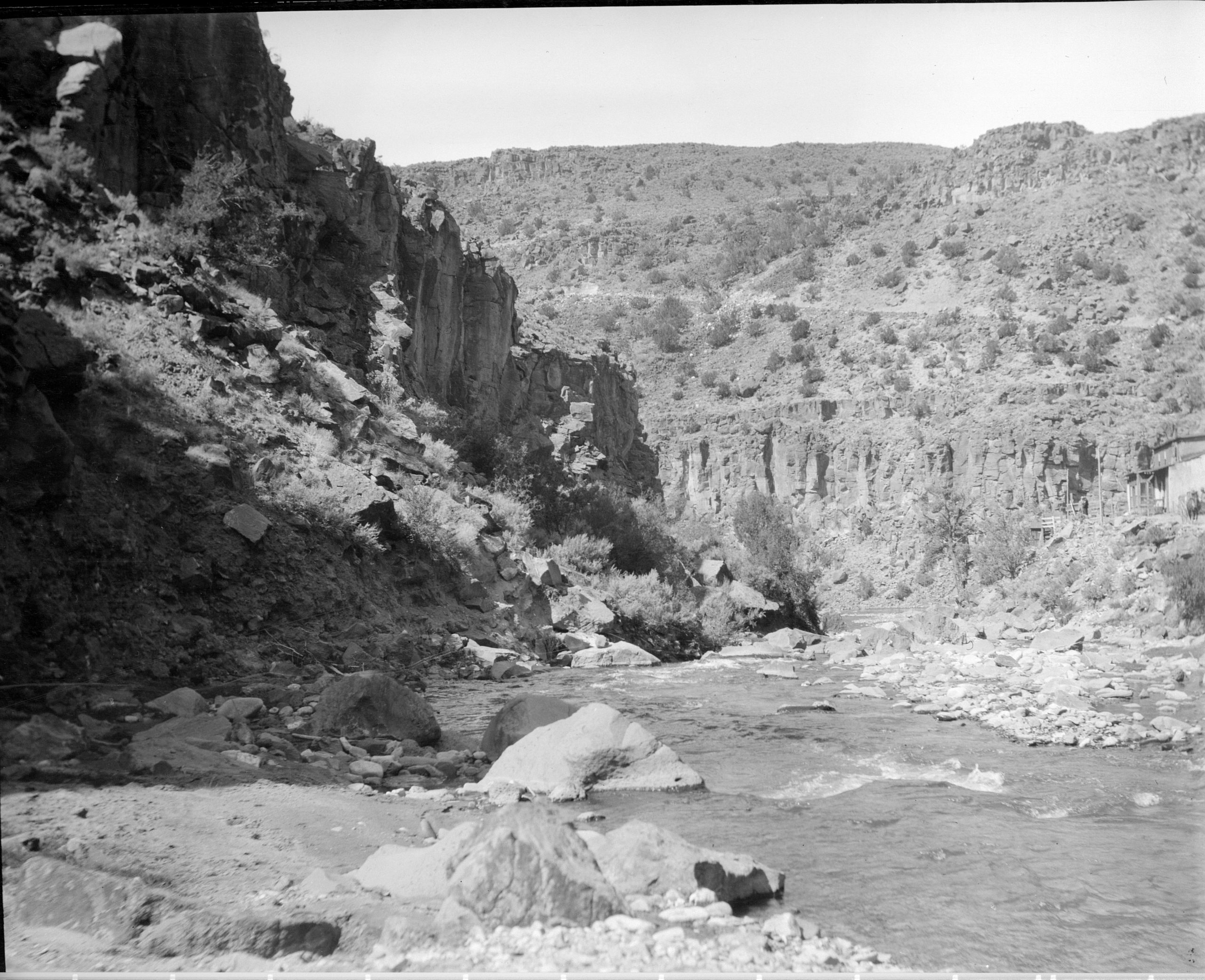
According to Raye, “Through all this traveling, he developed a passion for transportation and decided that what the West needed was transportation. For close to 30 years, he provided the only transportation in and out of Taos. He brought the members of the Taos Society of Artists to town. Even though he was gambler and got into some fights, everyone liked him.” In her discussions with Evans, she learned, “Dunn was highly respected in the region. In his later years he held ‘court’ four to five days a week near or on the plaza. Everyone came up to ‘the King’ to talk and pay their respects. He showed a lot of dignity.”
In 1942, Dunn was pardoned by the Texas governor on what Dunn described as the happiest day of his life. He died on May 21, 1953, and tributes to him covered most of the front page of The Crepusculo, the forerunner of the Taos News.
John Dunn’s legacy
Soon after Dunn bought the bridges at Taos Junction and Arroyo Hondo, a flood washed both of them out. Undeterred, he rebuilt the bridge in Arroyo Hondo, along with the hotel there. He charged a toll for people and animals to cross the bridge; the charge for a person was $1, fifty cents apiece for horse and cattle, and twenty-five cents for sheep. His stagecoach service picked people up in the small town of Servilleta, 10 miles south of Tres Piedras, a stop for the Chili Line Railroad. Dunn drove the stagecoach that brought passengers across the mesa through snow and hailstorms on a rough road that he helped build which descended to the river at Arroyo Hondo. Dunn would later own the first car in Taos, a Ford Model T, and transitioning his business from stagecoach to automobile. The modern bridge today stands in the same place as Dunn’s original bridge.
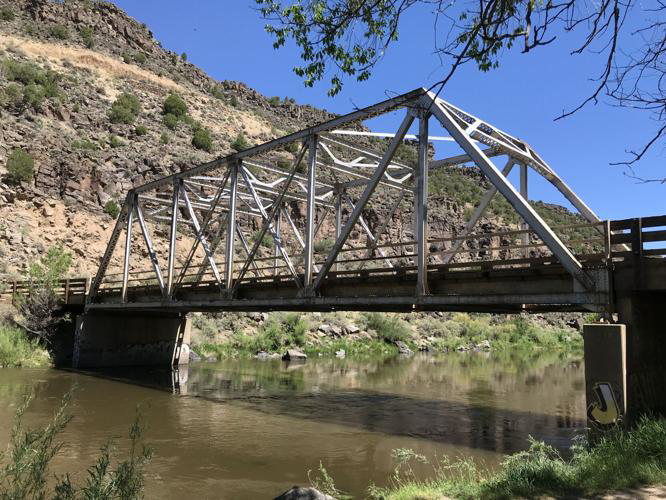
Dunn’s ten-room home where he lived with his wife, Adelaide, and his four daughters and son was located on Bent Street, and now houses a series of shops. Raye explains that “Harvey Mudd bought from John Dunn’s widow in 1969 or 1970 and renovated the house into shops. Mudd was from a rich family in Los Angles and had lived in the New Buffalo commune. His friends from New Buffalo wanted to open little businesses, so he converted the house into seven little shops.” Mudd sold the converted house to Raye in 1982 because they shared a philosophy about creating community and supporting merchants, rather than running a business only to make money. She owned the Apple Tree Restaurant and was interested in creating a beautiful walkway to connect Bent Street with the Plaza.
Dunn originally owned an acre of land with his house, orchard and stable on it. The orchard is now the municipal parking lot, and the stable housed a restaurant that burned down soon after Raye purchased the property. She rebuilt on the footprint of the original stable and the building now houses shops.

Hauntings
Some of the shop owners report strange happenings, including a restaurant owner that says things are frequently and mysteriously moved around. Esther Raskin, who has worked both in the coffee shop and the bookstore that occupy the original John Dunn house, reports that she often heard strange noises when she was there at night. “Definitely at least one night, I was down in the basement of the coffee shop, and I heard stomping around upstairs like someone was moving tables and chairs. I went up and nothing was moved. I would frequently hear someone walking around and no one was there,” she said
Sometimes things would fly off the shelves at the coffee shop and books would come off the shelves at the bookstore when no one was nearby. Raskin points out that the house is near many sites downtown that had a violent history and there may be restless supernatural activity as a result.
The restlessness of the spirits is not surprising given the deep and sometimes-troubled history of the town. Everything that has happened here and its natural beauty creates the complex and mysterious fabric that is Taos. As biographer Max Evans says “…if you spend the four seasons of nature in Taos, it won’t matter whether you reside there permanently or not, its powerful earth-forms and ethereal mountain mists will follow and enwrap you forever. Long John Dunn is an immutable part of the magic matrix.”
